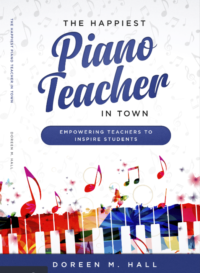
Let me start by being perfectly honest. I don’t like teaching scales or arpeggios. Come to think of it, I don’t like playing them either. I don’t know of many teachers or students that are jazzed about practicing scales. When it’s time during a lesson to play scales I always kind of feel like the nurse who comes in at the end of a checkup to give out the medicine. I know that my students are secretly hoping that I will forget to ask for the scale assignment. No, I don’t like teaching scales and arpeggios, not at all. So why not just quit? After all, I could get by without scales, my students would be happier and no one would be the wiser. I don’t like pushing my students into doing things they don’t want to do and besides, aren’t piano lessons supposed to be fun? That stuff is so “old school”. Convincing kids to play piano scales and arpeggios, why should I? Who needs em’?
So why not just quit? After all, I could get by without scales, my students would be happier and no one would be the wiser. I don’t like pushing my students into doing things they don’t want to do and besides, aren’t piano lessons supposed to be fun? That stuff is so “old school”. Convincing kids to play piano scales and arpeggios, why should I? Who needs em’?
Actually, we all need them. Really we do if you want to learn to play well and understand the music you need to study scales and arpeggios. When my students whine and tell me scales are boring I let them know I fully understand how they feel. I spend a little bit of time commiserating with them and then I set about the business of convincing them to practice those scales and those arpeggios.
Check Out Paloma Piano’s Free “Major Scale and Arpeggio Book”
Reasons to Play Piano Scales and Arpeggios
Here are five good reasons I give my students to get cracking on scales and arpeggios.
To begin with, I point out to my students the fact that all of our key signatures are connected to the scales. The D major scale has two sharps, and so does the key signature. The relative minor scale also has two sharps. Scales give us the basis for music theory. I tell my students that piano players always excel in music theory class.
Chords are built upon scales and arpeggios are broken chords. This fact should be of particular interest to students who wish to play popular music or jazz.
Scales and arpeggios build technique. Students may not care to much about technique but I tell them that scales develop speed and strength. They can relate to that, especially the boys.
Scales and arpeggios give us the basis for piano fingering. If you know your scales and arpeggios you will have the basis for naturally correct fingering.
Classical music is chocked full of both scales and arpeggios. That’s a huge shortcut when it comes to learning new pieces.
Of course, I could just insist that my students practice their scales (and I do) but I like for my students to understand why I have them do things. My teaching practice is focused on helping my students reach the goals they have for their own playing as quickly as possible. For my students, this means a minimum of learning four-octave major scales and arpeggios.
Convincing kids to play piano scales and arpeggios is not the highlight of my piano teaching job, but they are important. I like to think of scales as vitamins instead of medicine. They keep your playing well-balanced and healthy.
If you like this post check out my new book.
Stay tuned for the next blog post. “Teaching Scales and Arpeggios the Easy Way”
Visit our sister site for students and parents pianoparents.net
If you would like to find out about becoming a member of Paloma Piano we have a number of very attractive membership options including a free membership that offers a large number of piano scores, teaching resources, and games. The free membership is forever free and no credit card is needed. Check it out!
You can explore all of our free materials here.



Comments & Discussion